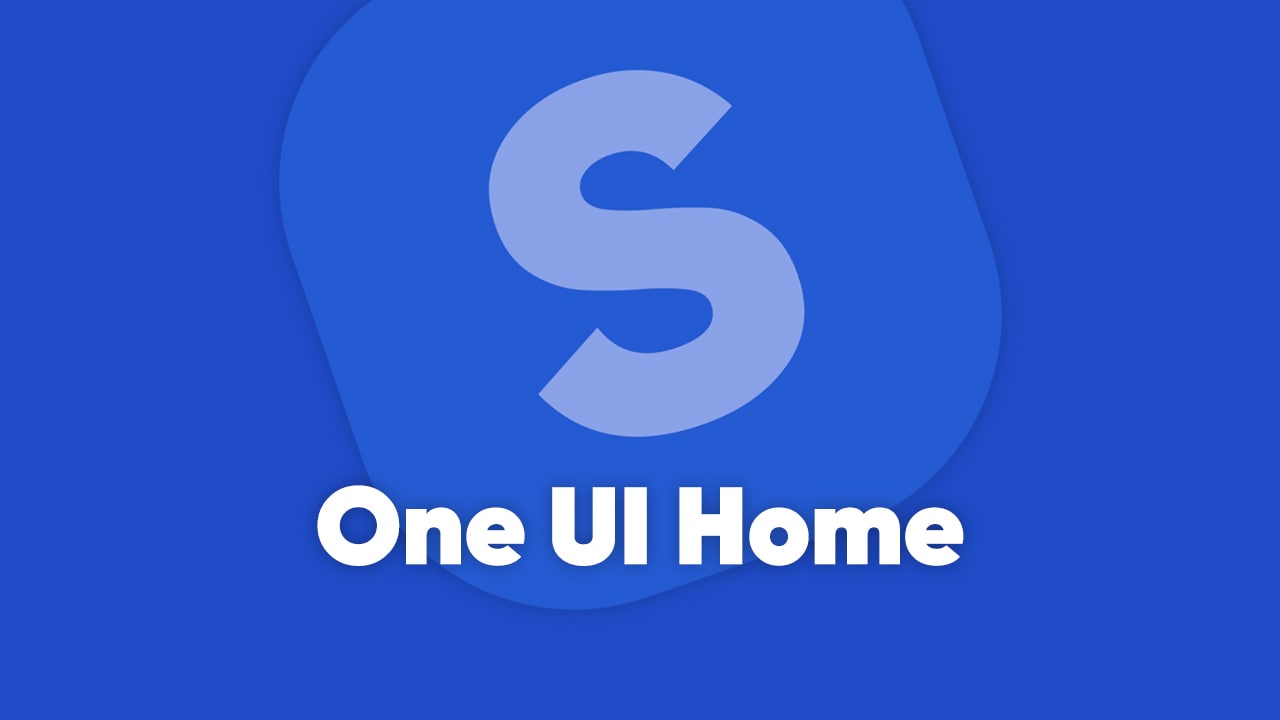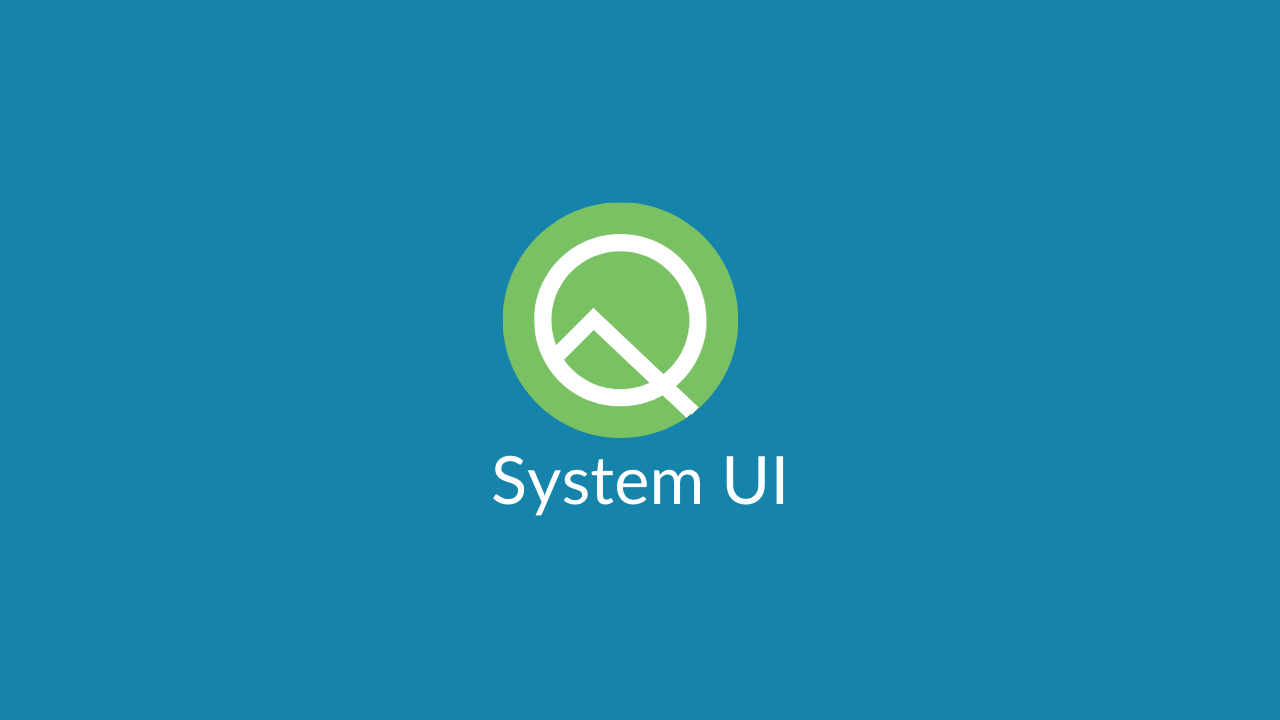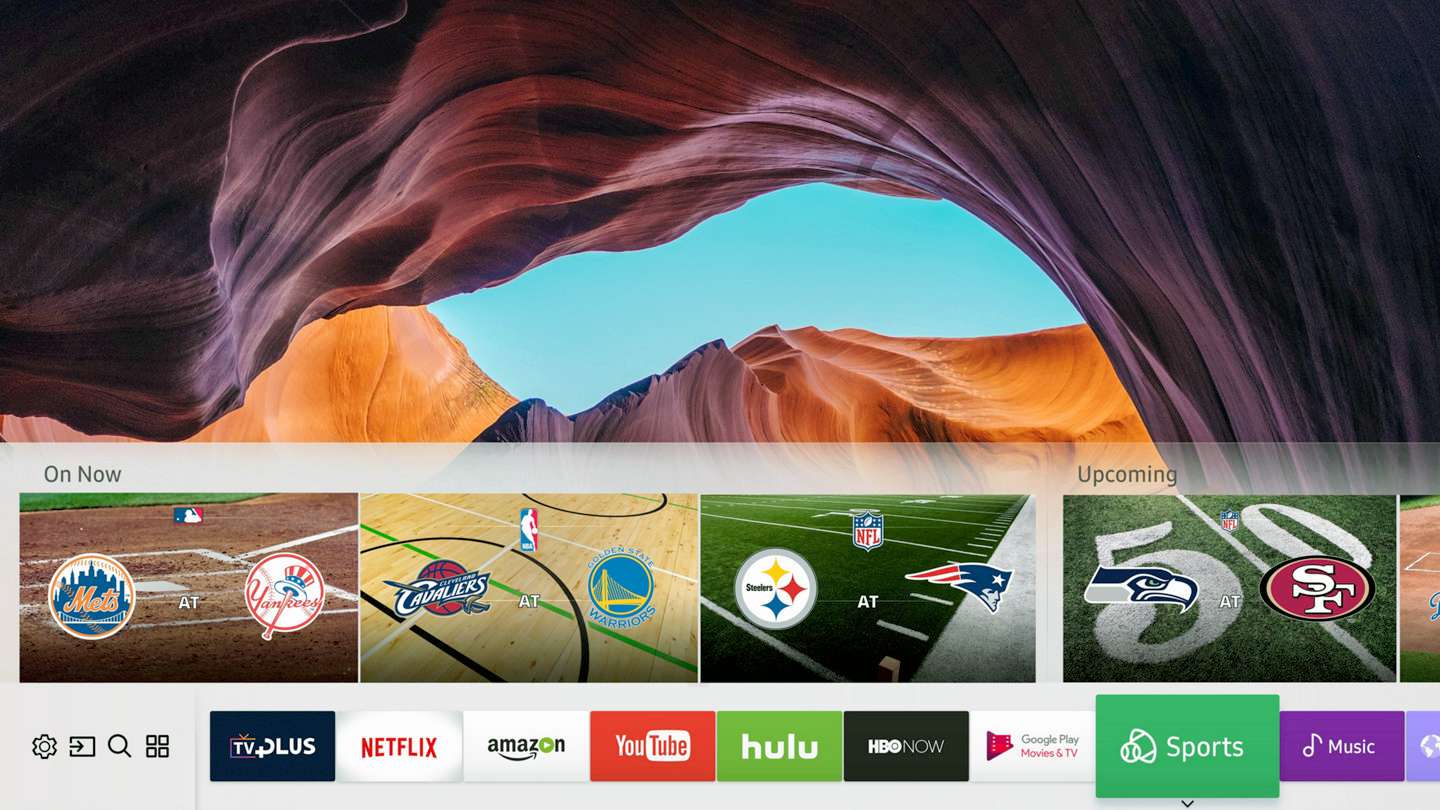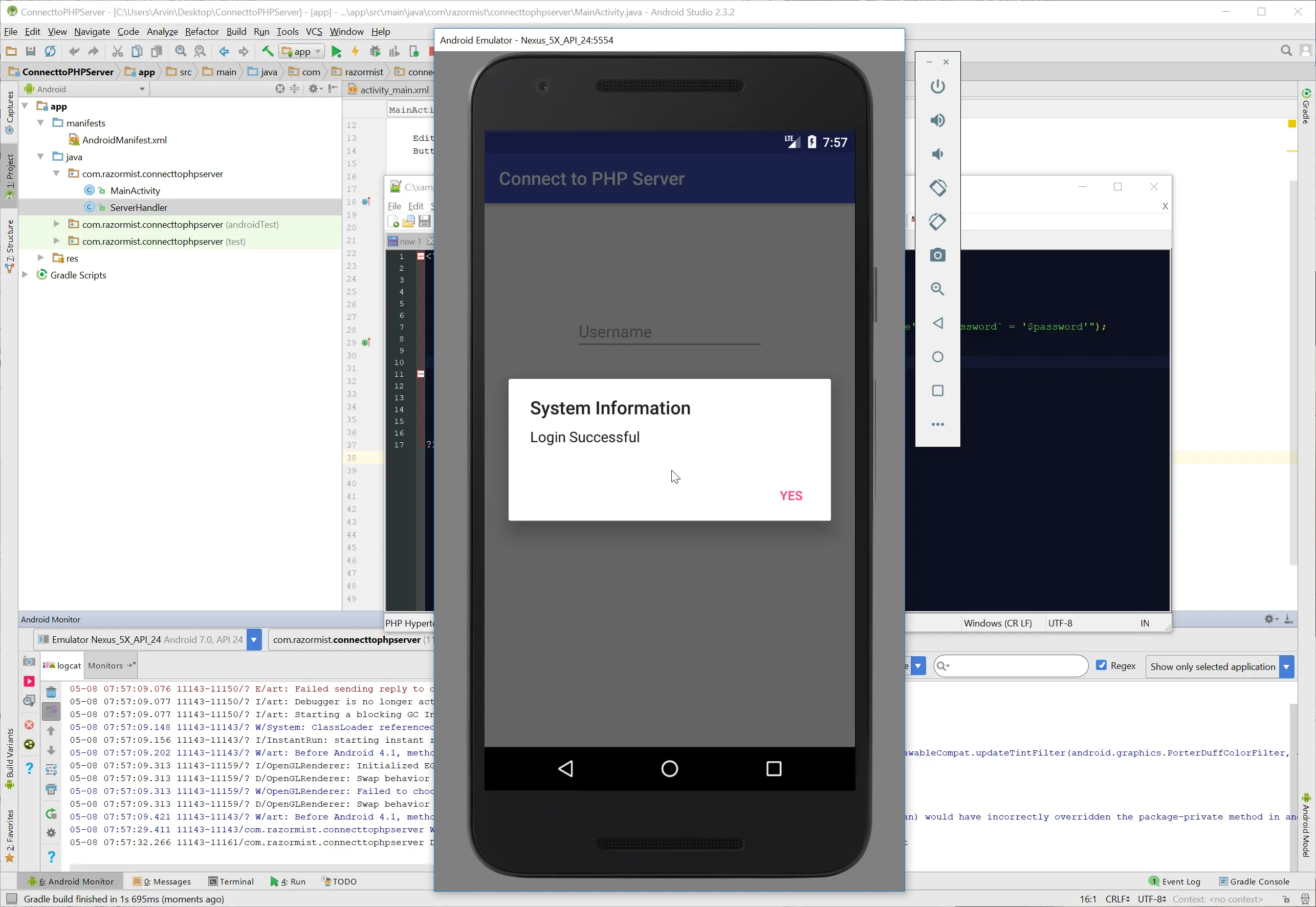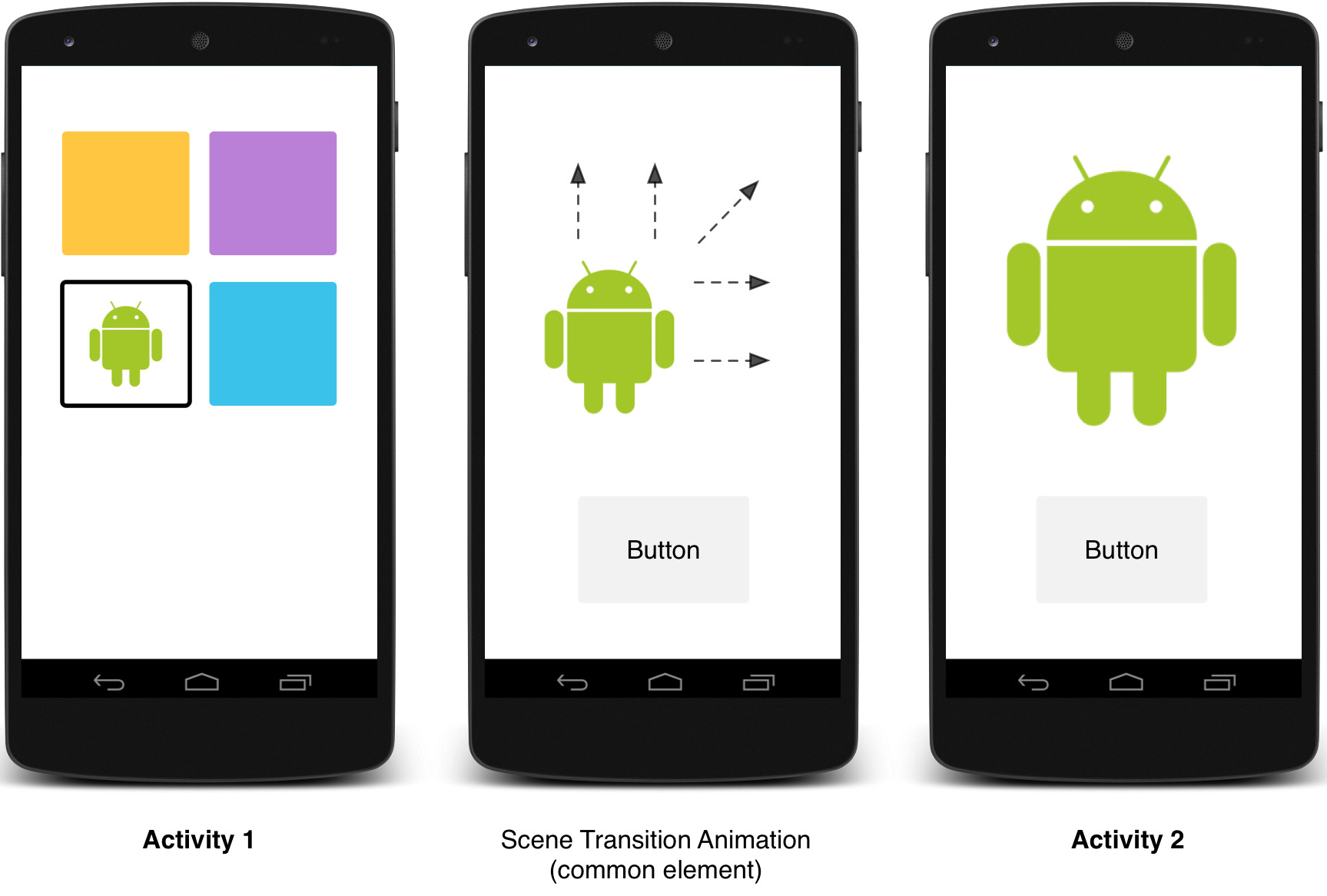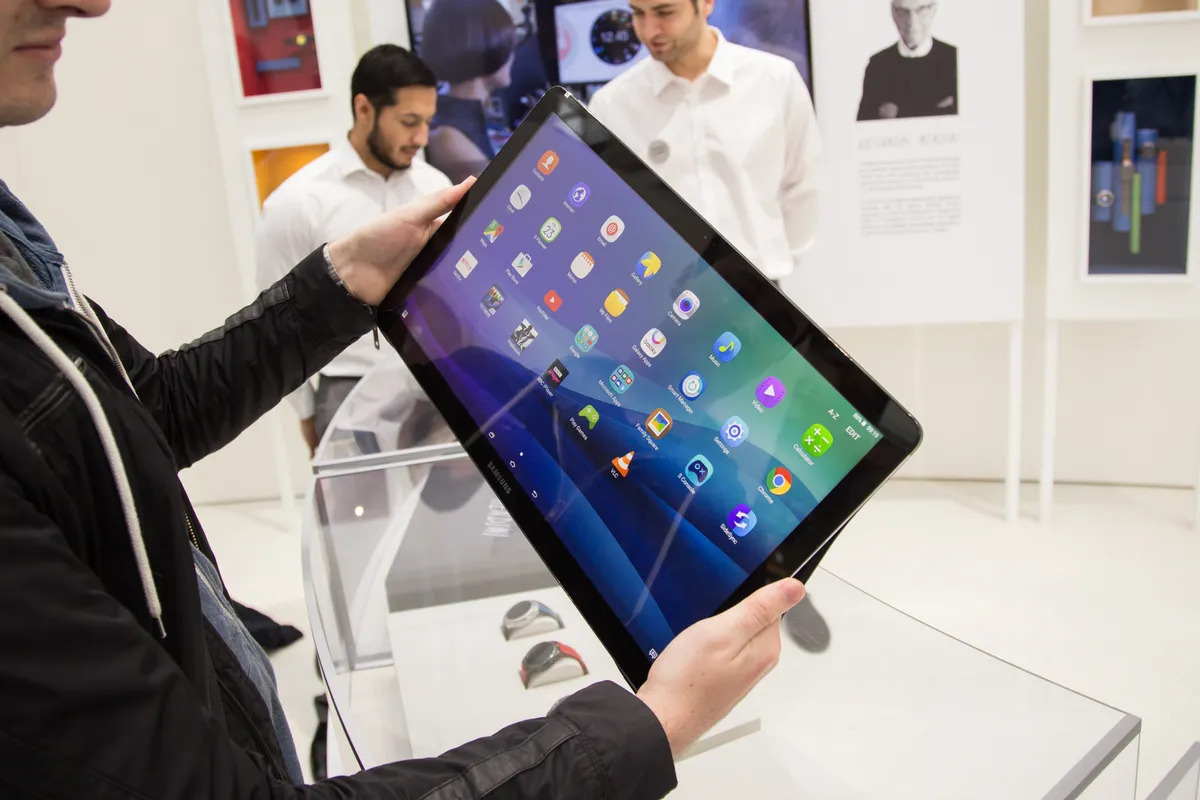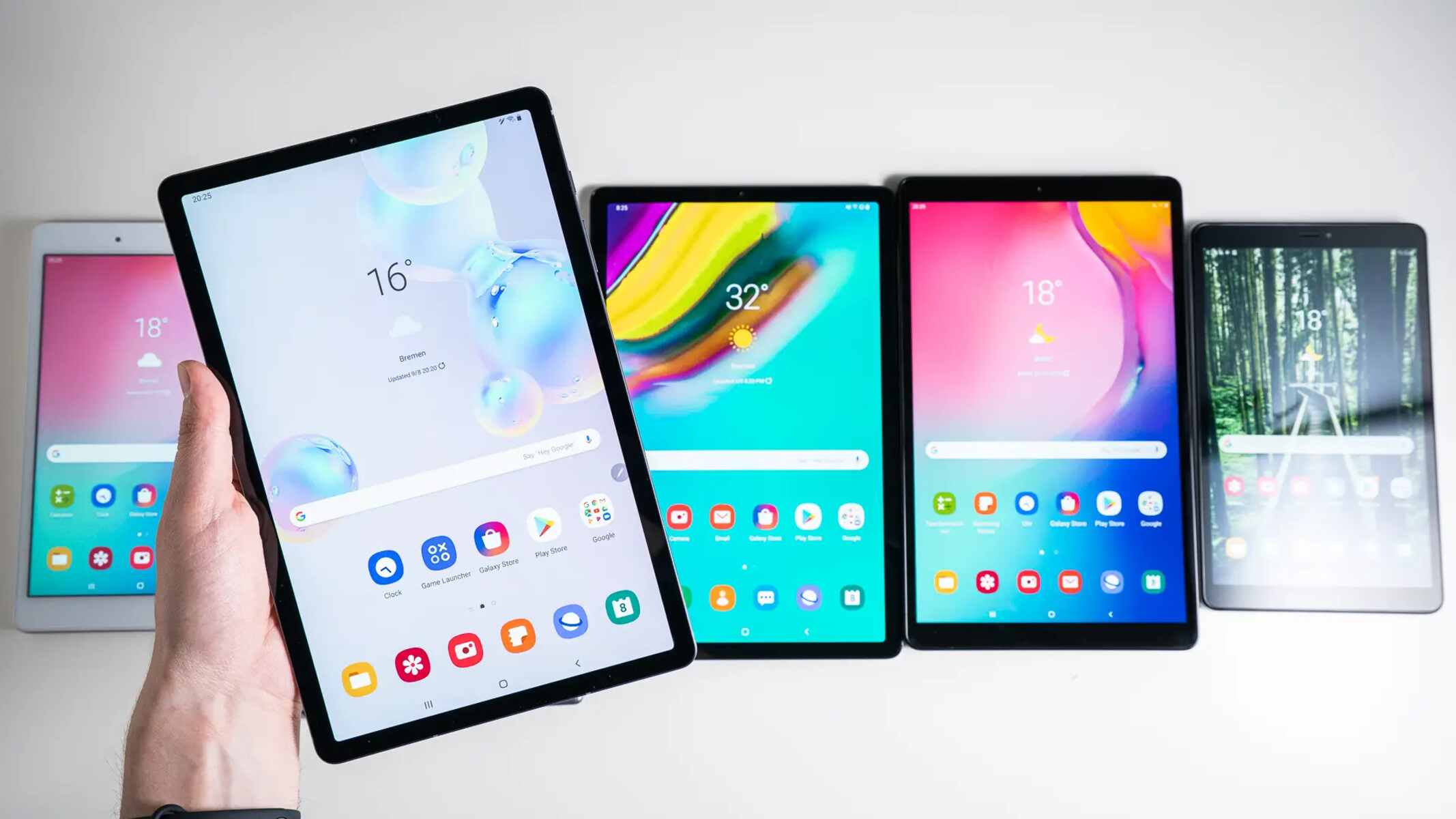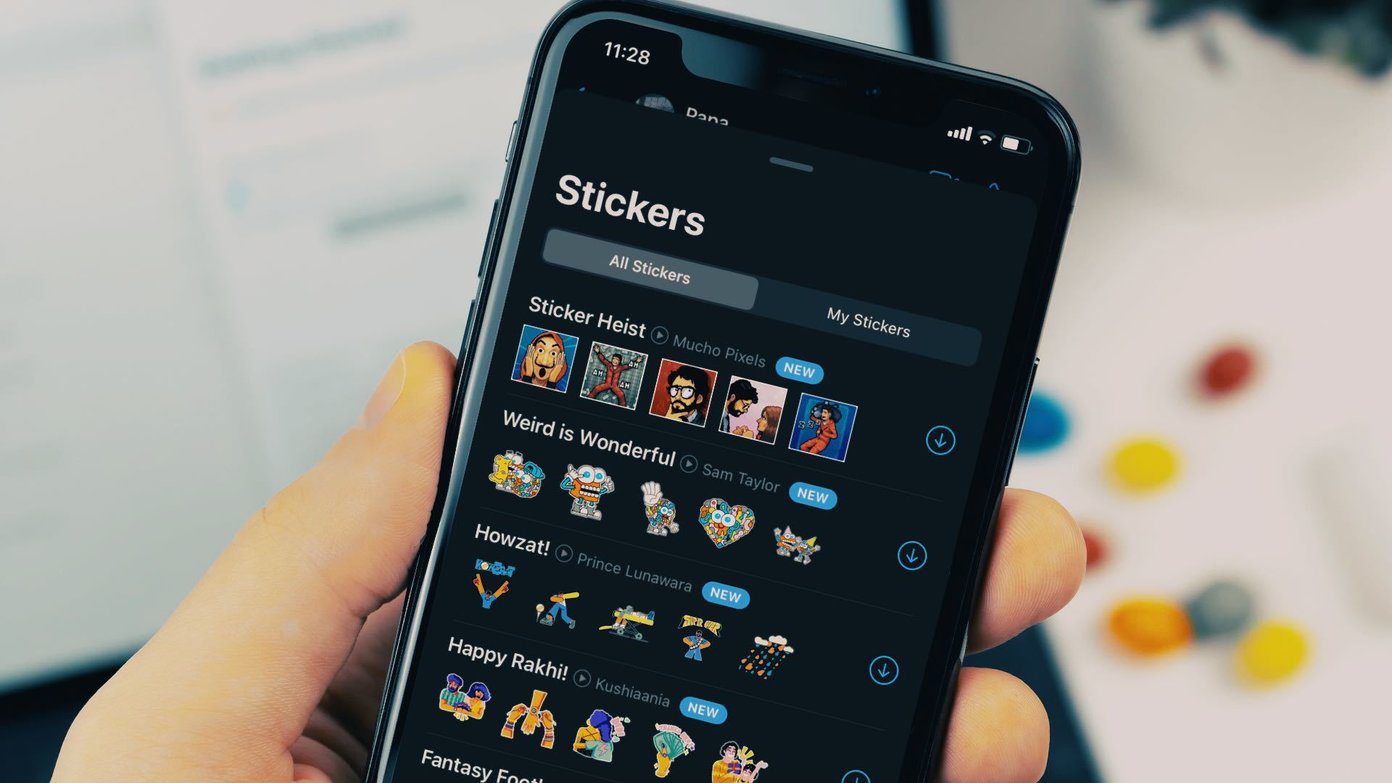Introduction
Welcome to the world of Android, where customization and personalization are at your fingertips. One of the key aspects that sets Android apart is its ability to adapt to your needs and preferences. And when it comes to creating a user-friendly interface, Samsung has taken it to the next level with its innovative design language called One UI Home.
One UI Home is the default launcher that comes pre-installed on most Samsung devices. It is a powerful application that not only provides a visually pleasing experience but also offers numerous customization options to make your device truly your own. Whether you want to rearrange your home screen, change the app icons, or customize the theme, One UI Home has got you covered.
With One UI Home, Samsung aims to provide users with a streamlined and intuitive interface that simplifies the overall user experience. It is designed to enhance usability by placing important elements within easy reach and optimizing the layout for one-handed operation. This means you don’t have to strain your fingers or stretch your thumb to access essential functions on your device.
Furthermore, One UI Home implements a clean and minimalistic design philosophy, putting the focus on what matters the most – your content. The user interface is visually appealing yet clutter-free, allowing you to immerse yourself in your apps, widgets, and wallpaper without distractions. It provides a seamless and fluid navigation experience, making it a joy to use your Samsung device on a daily basis.
Whether you’re a tech enthusiast or a casual smartphone user, One UI Home offers a range of features and customization options that can cater to your unique needs. In this article, we will explore the exciting features of One UI Home, discover the various customization options available, and provide you with tips and tricks to get the most out of this powerful launcher. So, let’s dive in and unlock the full potential of your Samsung device with One UI Home!
What is One UI Home?
One UI Home is the default launcher or user interface (UI) that Samsung uses on its smartphones and tablets. It is designed to provide a seamless and intuitive user experience while also offering a range of customization options to personalize your device. The primary purpose of One UI Home is to act as a hub for all your apps and widgets, allowing you to access them easily and efficiently.
One of the standout features of One UI Home is its ability to simplify navigation and improve one-handed usability. With an emphasis on ergonomics, Samsung has made it easier for users to interact with their devices by positioning key elements within thumb’s reach. This means that you can effortlessly navigate through menus, switch between apps, and perform various tasks with just one hand.
Another noteworthy aspect of One UI Home is its clean and minimalist design philosophy. Samsung has opted for a visually pleasing interface that feels uncluttered and enhances the user’s focus on their content. The icons, fonts, and overall layout are designed to be easy on the eyes and provide a seamless visual experience. This attention to detail extends to the transitions and animations, which add a touch of elegance to the user interface.
Additionally, One UI Home incorporates various features to improve productivity and simplify everyday tasks. For example, the Quick Panel provides quick access to commonly used settings, enabling you to adjust screen brightness, toggle Wi-Fi and Bluetooth, and perform other actions without having to dive into multiple menus. Moreover, One UI Home supports app pairs, allowing you to launch two apps simultaneously in split-screen mode for increased multitasking capabilities.
Overall, One UI Home is designed to offer a user-centric experience, prioritizing ease of use and personalization. Whether you’re a casual smartphone user or a power user, One UI Home provides a solid foundation for customizing your device to match your preferences and optimize your productivity. From changing wallpapers and themes to rearranging app icons and widgets, One UI Home grants you the freedom to make your device truly your own.
Features of One UI Home
One UI Home comes packed with a variety of features that enhance the usability and personalization of your Samsung device. Let’s explore some of the standout features that make One UI Home a powerful and versatile launcher:
- Customizable Home Screen: One UI Home allows you to customize your home screen by rearranging app icons, creating folders, and adding widgets. You can easily personalize the layout to suit your preferences and optimize your workflow.
- App Drawer: With One UI Home, you have the option to use either a traditional app drawer or a simplified layout where all your apps are displayed directly on the home screen. This gives you the flexibility to choose the organization style that works best for you.
- Themes: Personalize the look and feel of your device with One UI Home’s extensive collection of themes. Choose from a wide range of color schemes, wallpapers, and icon packs to create a unique and visually appealing interface that reflects your style.
- Gestures: One UI Home offers intuitive gestures that allow you to navigate your device with ease. From swipe gestures to quickly access the notification panel or app drawer, to pinch-in gestures to view all your home screens at once, these gestures streamline your interaction with the device.
- Secure Folder: One UI Home provides a Secure Folder feature, which acts as a secure and private space for storing sensitive files, apps, and data. This ensures that your confidential information remains protected from unauthorized access.
- Bixby Integration: Bixby, Samsung’s virtual assistant, is seamlessly integrated into One UI Home. You can use Bixby to perform tasks, search for information, and control various aspects of your device, all with simple voice commands.
- Smart Select: One UI Home’s Smart Select feature allows you to capture screenshots with ease. It also includes an intelligent cropping tool that lets you capture specific portions of the screen, whether it’s an image, text, or video.
- Edge Panels: The Edge Panels feature in One UI Home provides quick and convenient access to frequently used apps, contacts, tasks, and more. You can customize the edge panels to suit your needs and access them with a simple swipe from the edge of the screen.
These are just a few of the many features that make One UI Home a robust launcher on Samsung devices. Each feature is designed to enhance your overall user experience and provide you with the tools to customize your device according to your preferences and needs.
Customization options in One UI Home
One of the standout features of One UI Home is the vast array of customization options it offers. Whether you want to change the appearance of your device or fine-tune the way it functions, One UI Home provides the tools to make your Samsung device truly your own. Here are some of the customization options available:
- Wallpapers: One UI Home allows you to easily change your device’s wallpaper to suit your personal style. You can choose from a wide range of pre-installed wallpapers, or even use your own photos to create a unique and personalized look.
- Themes: Take customization a step further with One UI Home’s theme options. You can select from a variety of themes that apply a consistent visual style to your device, including changes to the system colors, app icons, and system sounds.
- Icon Packs: If you’re looking to give your device a fresh look, you can choose from a variety of icon packs available in the Galaxy Store. These packs offer a wide selection of alternative icons for your apps, allowing you to create a customized and unique home screen.
- App Drawer Organization: One UI Home offers different options for organizing your app drawer. You can choose to have all your apps displayed directly on the home screen, similar to iOS, or opt for a more traditional layout with a dedicated app drawer.
- Gestures and Navigation Bar: Customize the way you navigate your device with One UI Home’s gesture and navigation bar options. You can choose to use gesture-based navigation or stick to the traditional navigation bar at the bottom of the screen.
- Home Screen Layout: With One UI Home, you have the flexibility to customize your home screen layout. You can rearrange app icons, create folders to organize your apps, and add widgets to display useful information at a glance.
- Lock Screen and Always-On Display: Personalize your device’s lock screen and always-on display settings with One UI Home. You can choose from different clock styles, add widgets to the lock screen, and customize what information is displayed on the always-on display, such as the clock or notifications.
- Edge Lighting: Add a touch of flair to your device with the Edge Lighting feature in One UI Home. You can choose from various lighting effects that illuminate the edges of your screen when you receive notifications or calls.
These are just a few examples of the customization options available in One UI Home. Whether you prefer a minimalistic look or a more vibrant and personalized interface, One UI Home grants you the freedom to tailor your device to your unique style and preferences.
How to use One UI Home
Using One UI Home is straightforward and intuitive. Here are the basic steps to help you get started:
- Accessing One UI Home: On your Samsung device, simply press the home button or swipe up from the bottom to access the home screen powered by One UI Home. This is where you’ll find all your apps, widgets, and customization options.
- Customizing the Home Screen: To customize your home screen, long-press on any empty space. This will open the customization options, including the ability to change wallpapers, add widgets, and rearrange app icons. Experiment with different layouts and designs to find the setup that suits your style.
- Changing App Icons: One UI Home allows you to change the appearance of app icons using custom icon packs. To do this, long-press on the app icon you want to change, then select “Edit” or “Icon settings.” From there, you can choose from the available icon packs or even apply individual icons for specific apps.
- Accessing the App Drawer: If you prefer a more traditional layout, you can access the app drawer by swiping up or tapping the app drawer icon, typically located at the bottom center of the home screen. This will show you all your installed apps in a convenient list.
- Using Quick Settings: One UI Home features a Quick Settings panel that provides easy access to commonly used settings. To access it, swipe down from the top of the screen with two fingers or swipe down once and then swipe down again on the notification panel. This allows you to toggle settings like Wi-Fi, Bluetooth, and screen brightness without having to navigate through menus.
- Exploring the Edge Panels: One UI Home offers Edge Panels, which are accessible by swiping from the edge of the screen. These panels provide quick access to frequently used apps, contacts, tasks, and more. You can customize the edge panels by going to Settings > Display > Edge screen > Edge panels.
- Personalizing the Lock Screen: To personalize your lock screen, go to Settings > Lock screen. Here, you can customize the clock style, add widgets, and enable or disable features such as notifications and music controls on the lock screen. You can also change the lock screen wallpaper to match your home screen.
- Using Bixby: One UI Home integrates Samsung’s virtual assistant, Bixby. You can access Bixby by pressing the dedicated Bixby button on some devices or by swiping right on the home screen. Use Bixby to perform tasks, search for information, control your device, and even customize Bixby settings according to your preferences.
These are just some of the key features and actions you can perform with One UI Home. Feel free to explore the various customization options and settings to tailor your device to your liking and make the most of the user-friendly experience provided by One UI Home.
Tips and Tricks for Using One UI Home
Get the most out of your Samsung device with these tips and tricks for using One UI Home:
- Customize your Edge Panels: Take advantage of the Edge Panels feature by customizing it to your needs. Add your frequently used apps, contacts, and tasks for quick access. You can also rearrange the order of the panels and customize the size and position of the handle.
- Enable One-Handed Mode: If you find it challenging to reach the top of your device’s screen with one hand, enable One-Handed Mode in the Settings. This feature will shrink the display and shift it closer to your thumb for easier one-handed operation.
- Use Secure Folder: Secure Folder provides a secure space to store sensitive files, apps, and data. Take advantage of this feature to keep your personal information private and protected. You can access Secure Folder by swiping down on the notification panel and tapping the Secure Folder icon.
- Customize App Icons: Don’t settle for the default app icons. Explore the Galaxy Store for various icon packs that can give your device a fresh and personalized look. Change the icons of individual apps or apply a complete set to transform the appearance of your home screen.
- Make use of Quick Settings: Customize the Quick Settings panel by adding or removing tiles for quick access to your most-used features. To edit the Quick Settings, swipe down from the top of the screen twice, then tap the three-dot menu and select “Button order.” From there, you can easily rearrange or remove tiles.
- Master Bixby: Take advantage of Bixby, Samsung’s virtual assistant, to streamline your daily tasks. Spend some time training Bixby to recognize your voice and preferences. You can customize Bixby’s settings, create routines, and explore the various voice commands and capabilities Bixby has to offer.
- Optimize battery usage: One UI Home offers various power saving modes to optimize battery usage. Enable Power saving mode to extend battery life, or customize the settings to limit background activity and conserve power.
- Backup and restore: Take advantage of One UI Home’s backup and restore functionalities to ensure that your personalized settings and preferences are saved. This is especially useful when switching to a new Samsung device or after performing a factory reset.
By implementing these tips and tricks, you can enhance your experience with One UI Home and make the most of its customization options and features. Feel free to explore and experiment with the various settings to create a unique and personalized user interface that suits your preferences.
Frequently Asked Questions about One UI Home
Here are some commonly asked questions about One UI Home along with their answers:
1. Can I change the default launcher on my Samsung device?
Yes, you have the flexibility to change the default launcher on your Samsung device. To do this, simply download a third-party launcher from the Google Play Store, such as Nova Launcher or Microsoft Launcher. Once installed, you can set it as the default launcher in your device’s settings.
2. Can I use One UI Home on non-Samsung devices?
No, One UI Home is specifically designed for Samsung devices and is not available for use on non-Samsung devices. However, there are alternative launchers available in the Google Play Store that can provide a similar user experience.
3. Can I uninstall or disable One UI Home?
You cannot uninstall or disable One UI Home as it is an essential system component of Samsung devices. However, you can choose to install a third-party launcher and set it as the default to use instead of One UI Home.
4. How can I update One UI Home?
Updates for One UI Home are typically included in system updates provided by Samsung. To ensure that you have the latest version of One UI Home, regularly check for system updates on your device. Go to Settings > Software update > Download and install to check for any available updates.
5. Can I reset One UI Home to its default settings?
Yes, you can reset One UI Home to its default settings. To do this, go to Settings > Apps > One UI Home > Storage > Clear data. Keep in mind that this will reset any customization options, such as app icons and home screen layouts, back to their default settings.
6. Does One UI Home support gesture navigation?
Yes, One UI Home supports gesture navigation. You can enable gesture-based navigation in the device’s settings. This will replace the traditional navigation bar at the bottom of the screen with gesture-based controls for a more immersive and intuitive navigation experience.
7. Can I use third-party icon packs with One UI Home?
Yes, One UI Home supports the use of third-party icon packs. You can download icon packs from the Galaxy Store or other sources and apply them to change the appearance of your app icons. Simply go to the home screen settings, select “Icon style,” and choose the icon pack you want to use.
These are some common questions regarding One UI Home. If you have any specific questions or concerns, it is recommended to consult the Samsung support website or reach out to their customer service for further assistance.
Conclusion
One UI Home is more than just a launcher – it’s a gateway to a personalized and user-centric experience on Samsung devices. With its intuitive design, extensive customization options, and features geared towards convenience and productivity, One UI Home empowers users to make their devices truly their own.
By leveraging the various customization options available in One UI Home, you can create a personalized home screen, change app icons, apply themes, and explore the wide range of possibilities to match your unique style and preferences. The clean and clutter-free interface enhances usability and helps you stay focused on what matters most – your content.
Furthermore, the integration of features such as Edge Panels, Bixby, and Secure Folder further enhances the functionality and convenience offered by One UI Home. These features, combined with the seamless navigation and one-handed usability, contribute to an overall enjoyable user experience.
As you delve into the world of One UI Home, don’t hesitate to unleash your creativity and experiment with different customization options. Make the most of the available themes, icon packs, and gestures to tailor your device to your liking. And remember, One UI Home is not set in stone – you can always explore third-party launchers or adjust settings to further enhance your experience.
So, embrace the power of One UI Home on your Samsung device and discover a world of personalization and convenience at your fingertips. Customize, navigate, and make your device a true reflection of your style and preferences. With One UI Home, your Samsung device becomes more than just a device – it becomes an extension of your personality.







